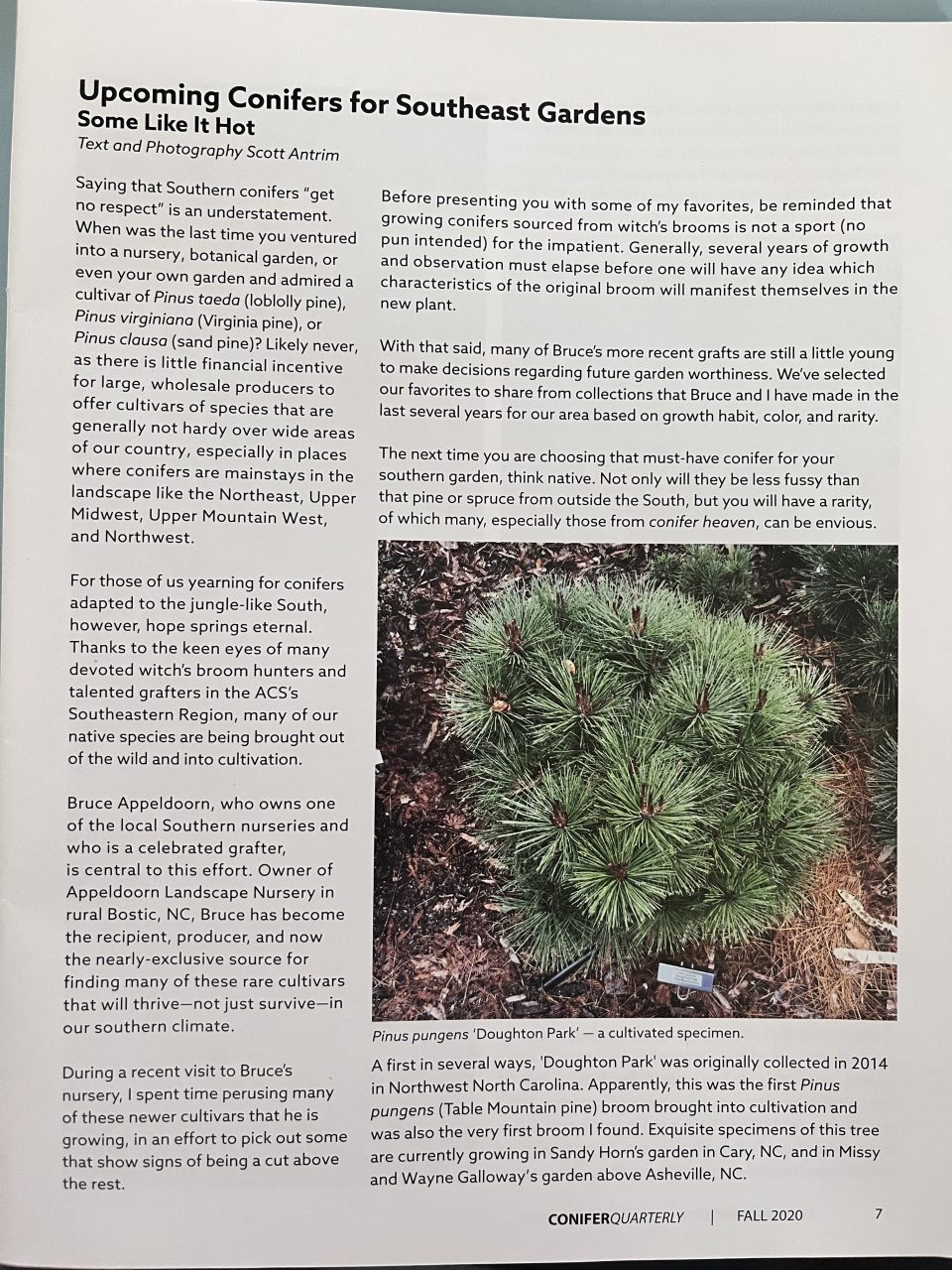The recent article in Conifer Quarterly captures much of what makes this work both challenging and rewarding. For years, southeastern conifers have often been overlooked in favor of species more familiar to nurseries and gardeners in the Northeast, Midwest, and Pacific Northwest. Yet here in the Southeast, we have a rich diversity of native pines that deserve equal recognition — and I’ve been fortunate to spend a career helping bring some of these species forward.

Scott Antrim’s piece rightly points out that much of this work begins with broom hunters and continues through years of patient observation. These are not projects for the impatient. From the initial discovery of a witches’ broom to seeing its grafted offspring mature into a stable, garden-worthy cultivar can easily take several years. The example of Pinus pungens ‘Doughton Park’ — the first broom I ever found, and the first table mountain pine introduced into cultivation — stands as a reminder of how even a single find can open entirely new doors.
At the nursery, my goal has always been to serve as both steward and collaborator — working with collectors, broom hunters, and fellow propagators to ensure these rare selections not only survive, but thrive, in the heat and humidity of the Southeast. Every plant represents years of quiet work, grafting trials, stock evaluations, and more than a few hard lessons. But the reward comes when a once-hidden genetic variation finally stands upright in a collector’s garden, performing well under southern skies.
I appreciate Scott’s thoughtful writing and his continued efforts to bring attention to this unique corner of the conifer world. The future for southeastern conifers remains full of promise — if one is willing to wait, watch, and work.
